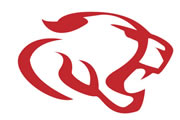General Information About Head Lice
-
What are head lice?
The head louse, or Pediculus humanus capitis, is a parasitic insect that can be found on the head, eyebrows, and eyelashes of people. Head lice feed on human blood several times a day and live close to the human scalp. Head lice are not known to spread disease.
Who is at risk for getting head lice?
Head lice are found worldwide. In the United States, infestation with head lice is most common among pre-school children attending child care, elementary schoolchildren, and the household members of infested children. Although reliable data on how many people in the United States get head lice each year are not available, an estimated 6 million to 12 million infestations occur each year in the United States among children 3 to 11 years of age. In the United States, infestation with head lice is much less common among African-Americans than among persons of other races, possibly because the claws of the of the head louse found most frequently in the United States are better adapted for grasping the shape and width of the hair shaft of other races.
Head lice move by crawling; they cannot hop or fly. Head lice are spread by direct contact with the hair of an infested person. Anyone who comes in head-to-head contact with someone who already has head lice is at greatest risk. Spread by contact with clothing (such as hats, scarves, coats) or other personal items (such as combs, brushes, or towels) used by an infested person is uncommon. Personal hygiene or cleanliness in the home or school has nothing to do with getting head lice.
What do head lice look like?
Head lice have three forms: the egg (also called a nit), the nymph, and the adult.
How did my child get head lice?
Head-to-head contact with an already infested person is the most common way to get head lice. Head-to-head contact is common during play at school, at home, and elsewhere (sports activities, playground, slumber parties, camp).
Although uncommon, head lice can be spread by sharing clothing or belongings. This happens when lice crawl, or nits attached to shed hair hatch, and get on the shared clothing or belongings. Examples include:
- sharing clothing (hats, scarves, coats, sports uniforms) or articles (hair ribbons, barrettes, combs, brushes, towels, stuffed animals) recently worn or used by an infested person;
- or lying on a bed, couch, pillow, or carpet that has recently been in contact with an infested person.
Dogs, cats, and other pets do not play a role in the spread of head lice.
(CDC, September 2015)
Treatment Frequently Asked Questions (FAQs)
Head Lice Policy
-
An elementary school nurse who determines or otherwise becomes aware that a child enrolled in the school has lice shall provide written or electronic notice of that fact to:
-
The parent of the child with lice as soon as practicable but not later than 48 hours after the administrator or nurse, as appli- cable, determines or become aware of that fact; and
-
The parent of each child assigned to the same classroom as the child with lice not later than the fifth school day after the date on which the administrator or nurse, as applicable, de- termines or become aware of that fact.
The notice:
-
Must include the recommendations of the Centers for Disease Control and Prevention for the treatment and prevention of lice; and
-
May not identify the child with lice if the notice is to the parent of each child in the same classroom.
-



